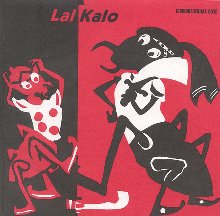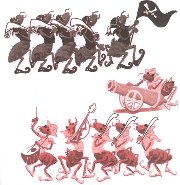-
পরবাস
বাংলা ভাষা, সাহিত্য ও সংস্কৃতি
Parabaas, a Bengali webzine since 1997 ... ISSN 1563-8685 -
ছোটদের পরবাস
Satyajit Ray
Rabindranath Tagore
Buddhadeva Bose
Jibanananda Das
Shakti Chattopadhyay
সাক্ষাৎকার -
English
Written in English
Book Reviews
Memoirs
Essays
Translated into English
Stories
Poems
Essays
Memoirs
Novels
Plays

The Land Where
I Found It All-

Buy in India and USA
-

Audiobook
Looking For An Address
Nabaneeta Dev Sen
Available on Amazon, Spotify, Google Play, Apple Books and other platforms.
-

Cautionary Tales
BookLife Editor's Pick -

পরবাস গল্প সংকলন-
নির্বাচন ও সম্পাদনা:
সিদ্ধার্থ মুখোপাধ্যায়)
-

Parabaas : পরবাস : বাংলা ভাষা, সাহিত্য ও সংস্কৃতি -
পরবাস | English | Book-Review
Share -
Kingdoms, Cats and Crypts : Back to the Classics : Susan Chacko
Lal Kalo, by Girindrasekhar Bose; Thema; ISBN:81-86017-21-6
Majantali & Co, by Upendrakishore Raychaudhuri; Thema; ISBN:81-86017-09-7
Father Gabriel's Crypt, by Shirshendu Mukhopadhyay; Thema; ISBN:81-86017-10-0
It's delightful to see Indian children's literature appearing in translation. Kids down in Kerala will be able to read Bengali folk tales, kids from Mumbai will be exposed to stories from Bhubaneswar. And of course, stories translated into English will open up a whole world to NRI kids, who are often fluent readers of only the English language.
How good are the translations, and do they work at all in English? Are the stories still appealing enough to entertain children who are exposed to the high-intensity entertainment of TV serials and comic books? Is the language dated, or are the stories still as fresh and delightful as they were when our grandparents read them?
The following trio serves as an excellent test case:
* Lal Kalo, by Girindrasekhar Bose (1887 - 1953).
* Majantali & Co, by Upendrakishore Raychaudhuri (1863-1915). Stories originally published in Tuntunir Boi.
* Father Gabriel's Crypt, by Shirshendu Mukhopadhyay (1935 - ) Originally published as Paagla Saheber Kabar.
All three translations were published by Thema, which has taken on the commendable task of translating classic Indian children's literature.
 Lal Kalo was written in 1930, a world and several generations ago. It is a classic battle saga set in the world of ants. The two great ant kingdoms, the Lal Pipras (red ants) and the Kalo Pipilis (black ants) enter into battle over the outraged modesty of the lovely Kalo Bou. Shades of the Mahabharata and the Iliad, and the rest of the story does not disappoint. There are strategies and battle plans, bravery and trickery. Each side has its allies such as Girguitee the chameleon and Kotkoti the toad. Family loyalties and distant relationships define who fights on which side. One side is favoured, then the other, but at the end there is a satisfying finale with one army completely wiped out.
Lal Kalo was written in 1930, a world and several generations ago. It is a classic battle saga set in the world of ants. The two great ant kingdoms, the Lal Pipras (red ants) and the Kalo Pipilis (black ants) enter into battle over the outraged modesty of the lovely Kalo Bou. Shades of the Mahabharata and the Iliad, and the rest of the story does not disappoint. There are strategies and battle plans, bravery and trickery. Each side has its allies such as Girguitee the chameleon and Kotkoti the toad. Family loyalties and distant relationships define who fights on which side. One side is favoured, then the other, but at the end there is a satisfying finale with one army completely wiped out.
The story stands the tests of time and translation quite well. The book alternates straightforward prose descriptions with bouts of poetry, but unfortunately, the poetry doesn't work quite as well. The little verses are trite, contrast unpleasantly with the implicit grandeur of the battles, and would have been better omitted or restricted to a few places. For some reason the entire book is printed in an italicized font that will be hard for children to read. Perhaps it is meant to be read aloud by an adult, but the plot is more suitable for those over 8 who can read by themselves.
The book alternates straightforward prose descriptions with bouts of poetry, but unfortunately, the poetry doesn't work quite as well. The little verses are trite, contrast unpleasantly with the implicit grandeur of the battles, and would have been better omitted or restricted to a few places. For some reason the entire book is printed in an italicized font that will be hard for children to read. Perhaps it is meant to be read aloud by an adult, but the plot is more suitable for those over 8 who can read by themselves.




The most modern of the three books is Father Gabriel's Crypt, whose author was born (a mere!) 65 years ago. It is an adventure story, start to finish, and will appeal to the 8-12 age group before they develop adolescent sophistication. The book features Haribandhu, who is about 13 and has failed Class 7 three times. His upset father sends him to a boarding school for problem children, Charubala Memorial, in a distant village. Haribandhu has to live in a large house, far from his family, with only the house servants, Jaguram and Jhumri, for company. In the new school he meets a gang of bullies, is saved by a mysterious fellow student, and is introduced to the village ghost. He learns to be brave, finds new resources within himself, and Saves All with the help of his new friends. Fairly standard stuff, but enthusiastically done. This story is less innocent than, say, the Enid Blyton adventures -- some of the bad characters are fairly unpleasant and people are beaten up quite mercilessly.
The language in the book is mostly appropriate to the location and plot, with a few exceptions. It is always a question whether the reader is best served by direct translations that maintain the flavour of the original, or by translating colloquial Bengali into colloquial English (and what dialect of English would sound right?). In this book the translator has taken the latter course, with mixed success. The pleasure of reading about Hari and Gopal is somewhat diluted when they use English slang to express shock or dismay. The helpful thief Phantom Patal is great fun when he climbs walls or escapes by using his wits, but less so when he calls Hari 'palsy' in bad Cockney. Such dialogue detracts from the distinctively Indian flavour of the adventure.
with a few exceptions. It is always a question whether the reader is best served by direct translations that maintain the flavour of the original, or by translating colloquial Bengali into colloquial English (and what dialect of English would sound right?). In this book the translator has taken the latter course, with mixed success. The pleasure of reading about Hari and Gopal is somewhat diluted when they use English slang to express shock or dismay. The helpful thief Phantom Patal is great fun when he climbs walls or escapes by using his wits, but less so when he calls Hari 'palsy' in bad Cockney. Such dialogue detracts from the distinctively Indian flavour of the adventure.
Chances are that the target reader group won't particularly mind these inconsistencies, though.
It is encouraging that these books are still a pleasure to read several decades after they were written, and I look forward to more from Thema Press.
Published: February, 2001
Tags: Review of Children's Books; Parabaas Translation - এই লেখাটি পুরোনো ফরম্যাটে দেখুন
- মন্তব্য জমা দিন / Make a comment
- মন্তব্য পড়ুন / Read comments
- কীভাবে লেখা পাঠাবেন তা জানতে এখানে ক্লিক করুন | "পরবাস"-এ প্রকাশিত রচনার দায়িত্ব সংশ্লিষ্ট রচনাকারের/রচনাকারদের। "পরবাস"-এ বেরোনো কোনো লেখার মধ্যে দিয়ে যে মত প্রকাশ করা হয়েছে তা লেখকের/লেখকদের নিজস্ব। তজ্জনিত কোন ক্ষয়ক্ষতির জন্য "পরবাস"-এর প্রকাশক ও সম্পাদকরা দায়ী নন। | Email: parabaas@parabaas.com | Sign up for Parabaas updates | © 1997-2025 Parabaas Inc. All rights reserved. | About Us